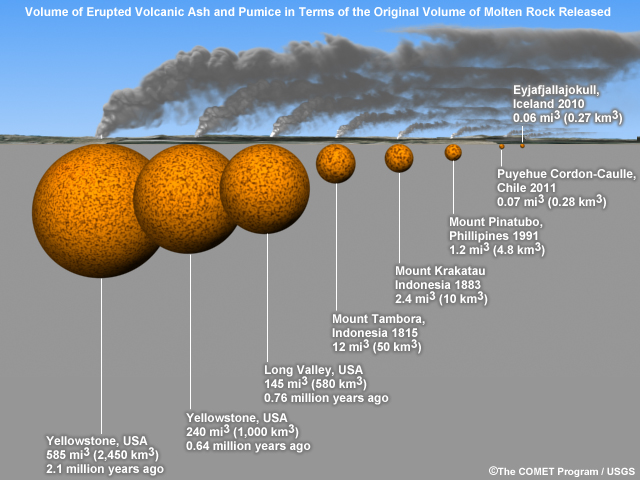Eruption Frequency and Size
Volcanic eruptions come in different sizes and explosiveness. Eruptions can be best compared by calculating the amount of erupted volcanic ash and pumice in terms of the volume of magma released (shown in this diagram by orange spheres). Small eruptions (0.01 km3) occur on the order of once every few months. Very large eruptions (1000+ km3), however, occur about once every 100,000 years. The difference in eruption scales is due to the time it takes to build the necessary magma volume and gas pressure required for a large eruption.
As you can see in the graphic, the Yellowstone eruption 2.1 million years ago released 585 miles3 (2,450 km3) of magma (shown in this diagram by orange spheres), or one-fifth of the volume of Lake Superior. It:
“was nearly 6,000 times greater than the volume released in the 1980 eruption of Mount St. Helens, Washington, which killed 57 people and caused damage exceeding $1 billion. Even the 1815 Tambora, Indonesia, eruption—the largest on Earth in the past two centuries—was one-fifth the size of the smallest of Yellowstone’s three great prehistoric eruptions” (reference USGS:http://pubs.usgs.gov/fs/2005/3024/ )

